|
Lesser Antillean Pewee Contopus latirostris Bobito,
|
 |
|
Photo: G. Lasley
|
|
Lesser Antillean Pewee Contopus latirostris Bobito,
|
 |
|
Photo: G. Lasley
|
|
IDENTIFICATION: A small flycatcher with an olive-brown back, buffy underparts and two faint buff wing bars. Immature birds are duller. Length: 15 cm.; average weight: 11.6 g. VOICE: The male has a ventriloqual song consisting of a series of three to five ascending, emphatic notes, also described as a low tremulous "pree-e-e-e." Audio (M. Oberle). HABITAT: Mountain forests, shade coffee plantations, and coastal scrub forests. HABITS: Sits quietly, in an upright stance, on branches in the forest understory or a forest clearing. It quickly flies out to hover in front of a leaf to glean an insect ("sally-hover") or catch one in mid-air before returning to its perch. It will use one perch for multiple sorties, and then try out another perch for a while. Its wide bill is adapted for flycatching. Unlike many other flycatcher species in Puerto Rico, the pewee eats very little vegetable matter: 99% of its diet consist of spiders and insects, such as flies, wasps, beetles, moths, and caterpillars. Although the Pewee will allow close approach by humans, it may be hard to locate since it is less active than other flycatchers like the Gray Kingbird. The pewee is sometimes the key bird in mixed-species foraging flocks. Its nest is a cup on a tree limb and contains 2-3 white eggs with brown spots. STATUS AND CONSERVATION: A common, but local species that is dependent on forest cover. It has adapted well to shade-grown coffee plantations, but that habitat type is threatened by conversion to high-yield coffee varieties that require full sunlight. RANGE: Occurs in central and western Puerto Rico, and on Guadeloupe, Dominica, Martinique and St. Lucia. It does not occur on the lower-lying islands between Puerto Rico and Guadeloupe. Regular locations to find this species are the Maricao and Guánica State Forests and the Boquerón Wildlife Refuge TAXONOMY: PASSERIFORMES; TYRANNIDAE; Fluvicolinae. The endemic subspecies that occurs in Puerto Rico (Contopus latirostris blancoi) is sufficiently different in plumage and song that taxonomists may eventually gather sufficient evidence to split the Puerto Rican form into a separate, endemic species. It would be called the Puerto Rican Pewee (Contopus portoricensis) and is already called that in some books. |
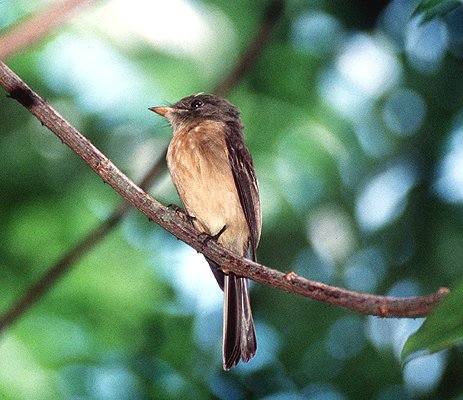 |
|
Photo: G. Beaton
|
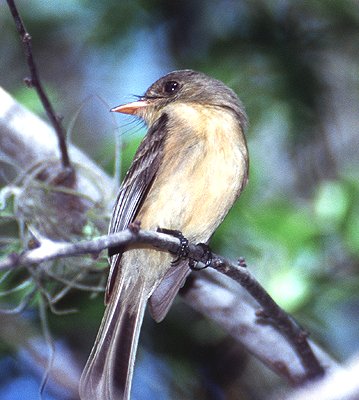 |
|
|
Photo: G. Beaton
|
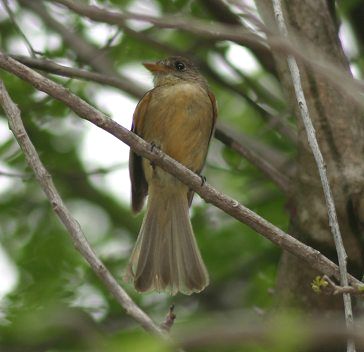 |
|
Photo: A. Sánchez Muñoz
|
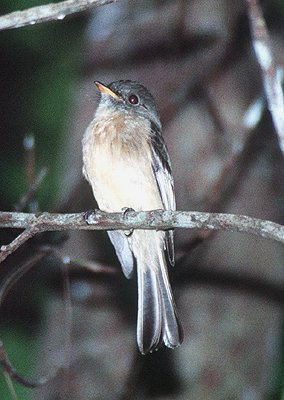 |
|
|
Photo: G. Beaton
|
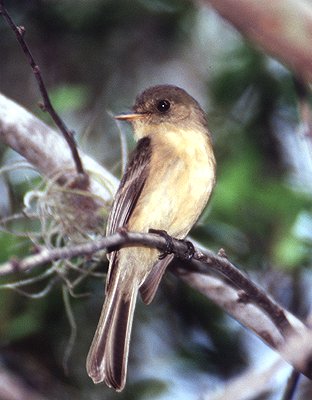 |
|
|
Photo: G. Beaton
|
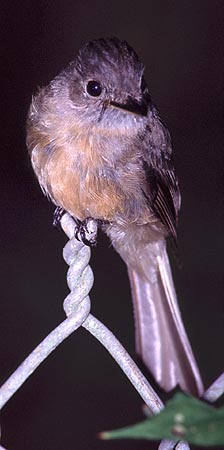 |
|
Photo: G. Lasley
|
 |
|
|
Photo: G. Beaton
|
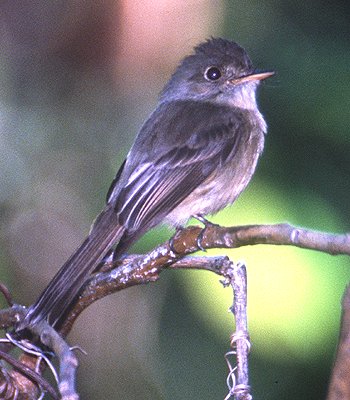 |
|
|
Photo: G. Beaton
|
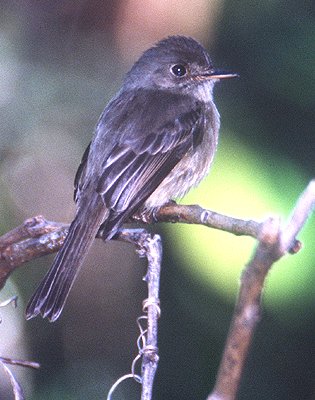 |
|
|
Photo: G. Beaton
|
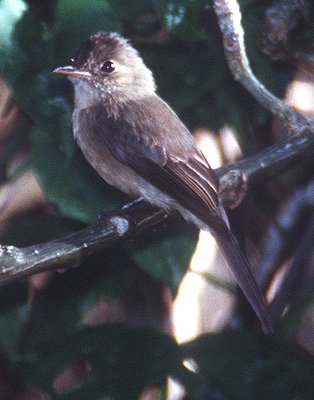 |
|
|
Photo: G. Beaton
|
 |
|
|
Photo: M. Oberle
|
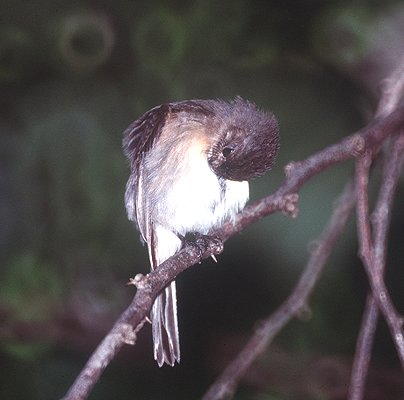 |
|
|
Photo: M. Oberle
|
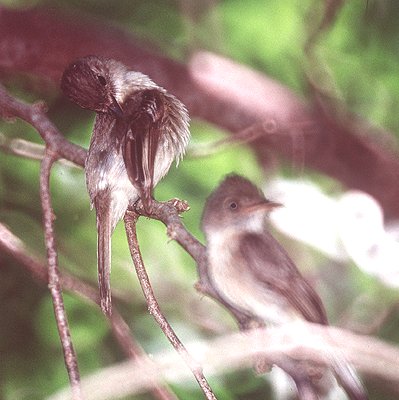 |
|
|
Photo: M. Oberle
|
 |
|
|
Photo: M. Oberle
|
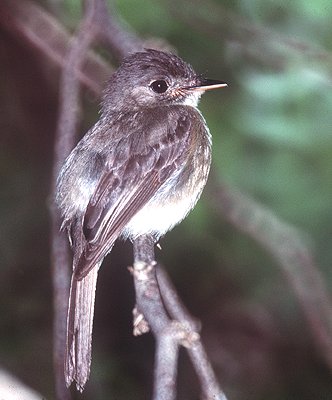 |
|
|
Photo: M. Oberle
|
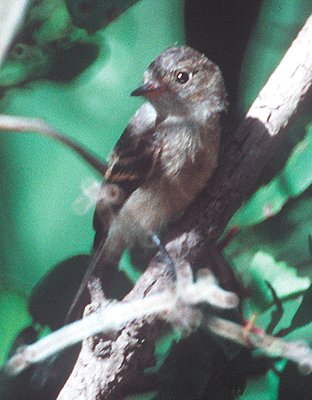 |
|
|
Juvenile - Photo: M. Oberle
|
|
References Cruz, A. and C. A. Delannoy. 1984. Ecology of the Elfin Woods Warbler (Dendroica angelae) II. Feeding ecology of the Elfin Woods Warbler and associated insectivorous birds in Puerto Rico. Carib. J. Sci. 20:153-162. Hamel, P. B. and F. J. Vilella. 1996. Observing mixed-species foraging flocks of resident and migratory birds in Caribbean habitats. El Pitirre 9(2):7-11. Raffaele, H.A. 1989. A guide to the birds of Puerto Rico and the Virgin Islands. Princeton. Raffaele, H.A. 1989. Una guía a las aves de Puerto Rico y las Islas Vírgenes. Publishing Resources, Inc., Santurce, PR. Raffaele, H.A., J.W. Wiley, O.H. Garrido, A.R. Keith, and J.I. Raffaele. 1998. Guide to the birds of the West Indies. Princeton. Lesser Antillean Pewee, Spanish text Next related species in taxonomic order Previous related species in taxonomic order |